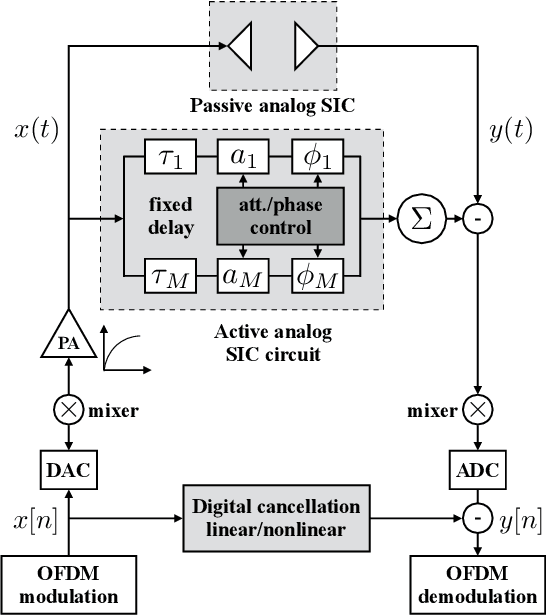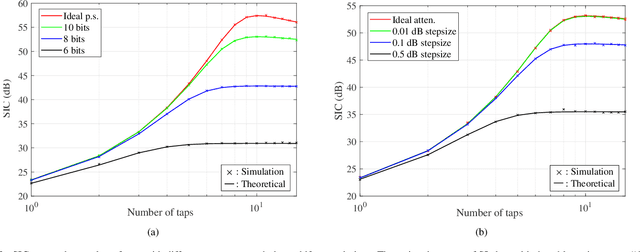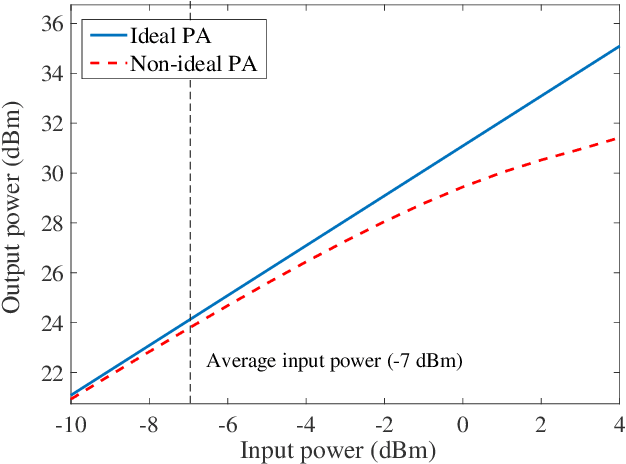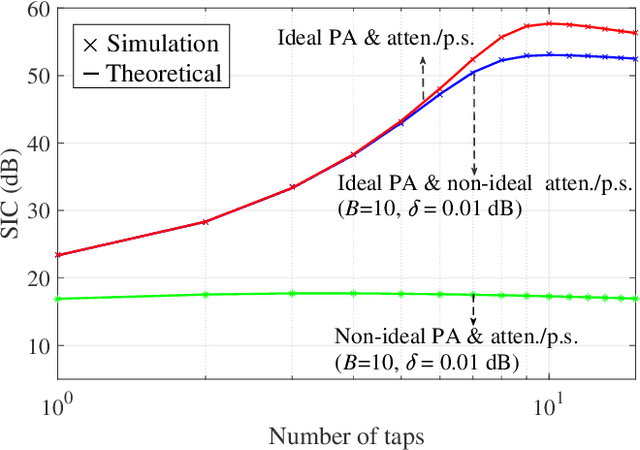Jong Woo Kwak
Analog Self-Interference Cancellation with Practical RF Components for Full-Duplex Radios
Jun 21, 2022



Abstract:One of the main obstacles in full-duplex radios is analog-to-digital converter (ADC) saturation on a receiver due to the strong self-interference (SI). To solve this issue, researchers have proposed two different types of analog self-interference cancellation (SIC) methods -- i) passive suppression and ii) regeneration-and-subtraction of SI. For the latter case, the tunable RF component, such as a multi-tap circuit, reproduces and subtracts the SI. The resolutions of such RF components constitute the key factor of the analog SIC. Indeed, they are directly related to how well the SI is imitated. Another major issue in analog SIC is the inaccurate estimation of the SI channel due to the nonlinear distortions, which mainly come from the power amplifier (PA). In this paper, we derive a closed-form expression for the SIC performance of the multi-tap circuit; we consider how the RF components must overcome such practical impairments as digitally-controlled attenuators, phase shifters, and PA. For a realistic performance analysis, we exploit the measured PA characteristics and carry out a 3D ray-tracing-based, system-level throughput analysis. Our results confirm that the non-idealities of the RF components significantly affect the analog SIC performance. We believe our study provides insight into the design of the practical full-duplex system.
 Add to Chrome
Add to Chrome Add to Firefox
Add to Firefox Add to Edge
Add to Edge